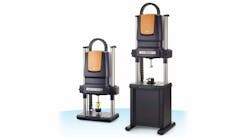WirelessHART gas detector can monitor presence of harmful gases for more than five years without a battery replacement.
The new Vanguard WirelessHART gas detector reduces monitoring costs and increases safety by eliminating the need for costly and fixed wiring.
United Electric developed the Vanguard detector in response to the market need for a cost-effective way to add multiple gas measurement points. Vanguard field-interchangeable gas sensor modules detect and record hydrogen sulfide (H2S) or methane (CH4) gas in parts per million (PPM) or% of lower explosive limits (LELs) respectively, along with network and battery status.
WirelessHART 7.2 technology carries signals to local 128 x 64 pixel digital displays or other IEC 62591 compatible connections — all of which integrate seamlessly with existing supervisory control and data acquisition (SCADA) or asset management (AMS) systems. The Vanguard detector has been designed and tested to interoperate with Emerson Smart Wireless Gateway 1410 and 1420.
The Vanguard detector can be mounted anywhere and dropped easily into any WirelessHART network by inputting the network I.D. and join key. The unit automatically senses the detector type and configures it automatically. Seamless, plug-and-play interoperability saves additional setup time and effort. Class 1, Div. 1&2 certification and an explosion-proof and intrinsically safe design help ensure trouble-free operation in hazardous environments. The unit also has ATEX and IECEx approvals.
Potential Applications:
- Wireless remote and local gas detection, such as tank farms, oil and gas production facilities, refineries, pipelines, abandoned wells and waste treatment plants.
- Temporary situations in which the cost of setting up a wired solution is completely unfeasible, such as a maintenance turnaround, natural disaster, security breach or plant expansion.
- Asset management initiatives, where trending of emissions over time through the deployment of multiple wireless sensors can initiate the necessary predictive and preventive maintenance, or pollution control monitoring.





